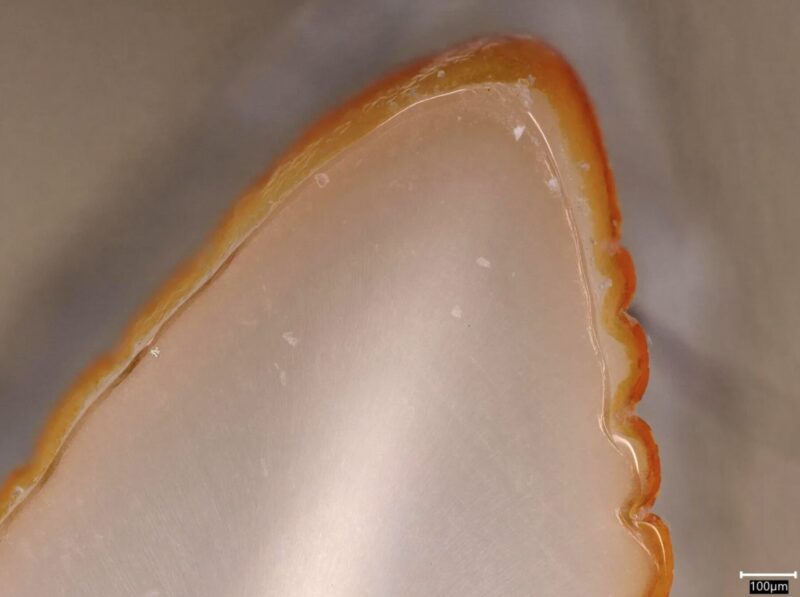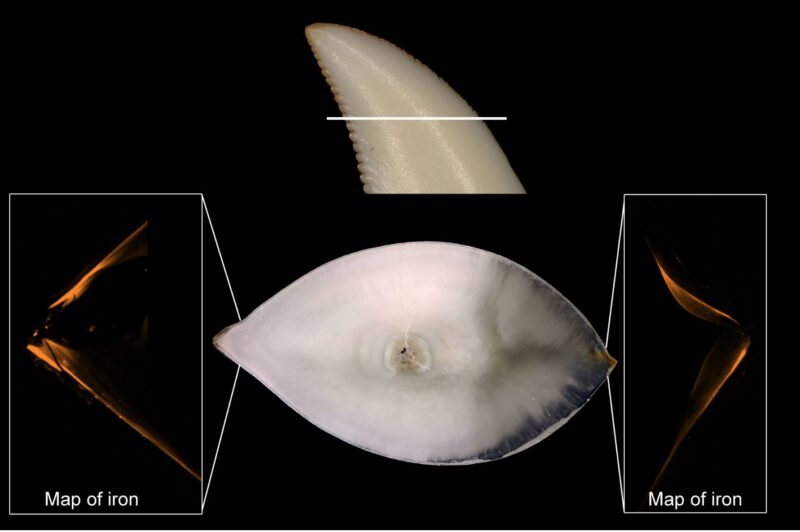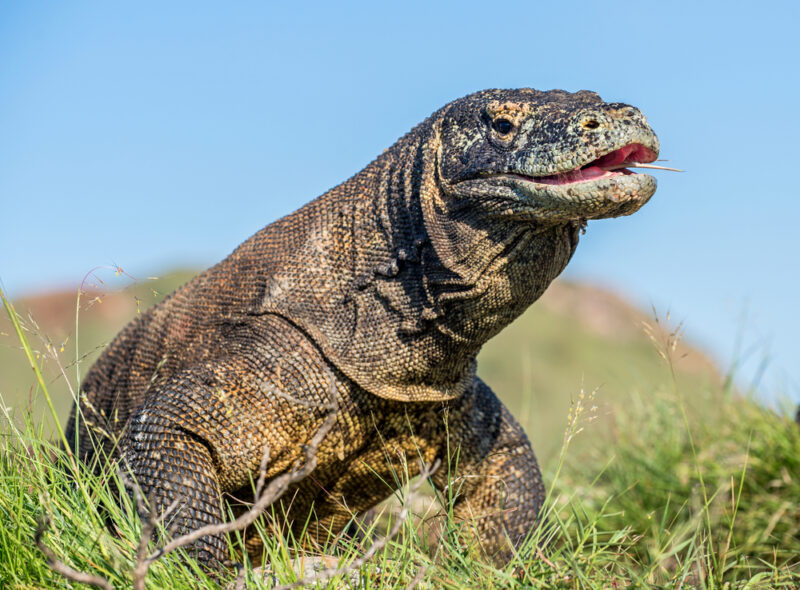As if Komodo dragons weren’t formidable enough, it turns out that their razor-sharp teeth are capped with iron for longevity.
Several mammals also have iron deposits in their teeth, but none as prominent as in this giant, 80kg lizard. The iron is so concentrated in Komodo dragons that the serrated edges of the teeth are orange. At first, researchers thought the color was food stains rather than iron.
Sharper edges
The combination of iron and jagged tooth edges allow the monitor lizards to tear through prey with ease. The iron creates a much stronger, sharper cutting edge. The lizard’s curved, iron-reinforced teeth help them to devour prey much larger than themselves. They will eat anything from small birds to horses and water buffalo.

The iron forms an orange layer along the edge of the tooth. Photo: Aaron LeBlanc/King’s College London
The team studied the teeth of Ganas, a Komodo dragon from the London Zoo that died last year. The zoo preserved Ganas’s body for research. Using microscopy and spectroscopy, they discovered that all the iron is inside the tooth enamel, creating a coating along the serrated edges.
“If they didn’t have this iron coating, I’m sure the enamel…would wear away very quickly, and the tooth would dull,” said lead author Aaron LeBlanc.
The researchers believe this offers a window into the structure of dinosaur teeth and how they tore apart their prey. The tooth structure of meat-eating dinosaurs and giant lizards is incredibly similar. Both are curved with jagged edges.
“We want to…learn more about how carnivorous dinosaurs might have ate and if they used iron in their teeth in the same way as the Komodo dragon,” said LeBlanc.

Komodo tooth iron map. Photo: Dr Aaron LeBlanc
But when they analyzed fossil dinosaur teeth for iron deposits, their results were inconclusive. Chemical changes during fossilization affect the quantity of iron. It was impossible to detect how much iron the teeth had when the dinosaur was alive.
The dinosaur teeth did reveal, however, that the enamel structure differed with the dinosaur’s size. Larger, carnivorous dinosaurs somehow “altered the structure of their dental enamel to maintain a sharp cutting edge.”
“With further analysis of the Komodo teeth, we may be able to find other markers in the iron coating that aren’t changed during fossilization,” said Leblanc. “We would [then] know with certainty whether dinosaurs also had iron-coated teeth.”






